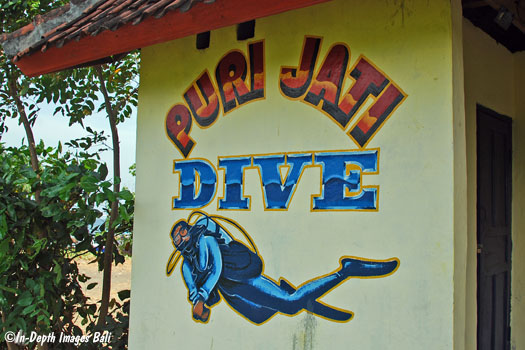
Puri Jati is a black sand beach with an easy water entry, although you may have to ford the small fresh water stream to get to the water's edge. The black sand bottom slopes gradually out to a depth of about 10m, at which point the slope increases, leading more quickly to deeper water. We dove there in 2012, 2013 and 2017. Mostly, we only went to the edge of the steeper slope, spending most of our time in the shallows on top. The flat sand had sea grass close to the beach, giving way to a large number of a couple of kinds of solitary corals that have a most peculiar symbiotic relationship with a sipunculid worm living in an empty gastropod shell. The coral grows on the shell, which becomes occupied by the worm, who is then able to provide some mobility to the coral and keep it from being buried in the soft sediment. There were a couple of obstructions--poles with concrete bases and old tires--placed out there to attract marine life, and they were often surrounded by fish and other animals. But much of the life was just randomly distributed on the sand. Among many other things, we saw frogfish (Antennarius pictus), ornate ghost pipefish (Solenostomus paradoxus), marine catfish (Plotosus lineatus), sea pens, cuttlefish, various scorpaenids including Inimicus didactylus and Parapterois heterura, lots of young Pterois volitans lionfish, commensal emperor shrimp (Zenopontonia rex ) on sea cucumbers, various burrowing crabs and echinoids, and a lot more. We saw a number of nudibranch species, including three specimens of an interesting (probably) Godiva species moving among the eel grass near the beach. Like many beaches on the north coast of Bali, the shore was lined with traditional, brightly painted Balinese outriggers called jukung.

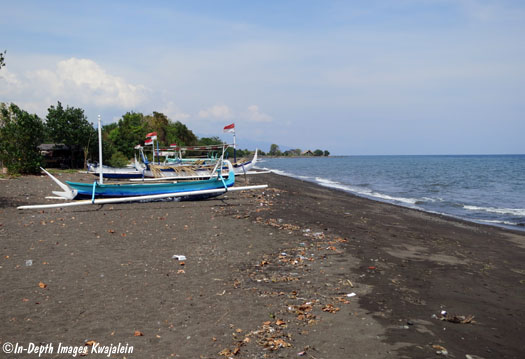
A fresh water stream cut through the beach and flowed into the ocean. Perhaps this accounts in part for the interesting animals.
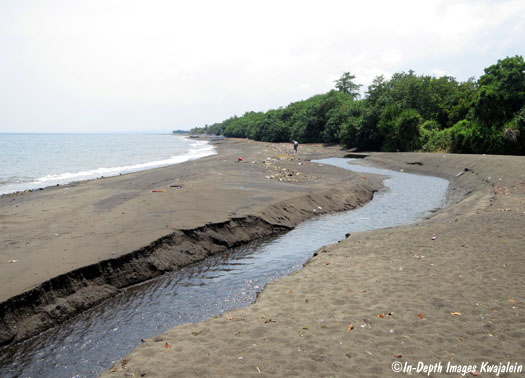
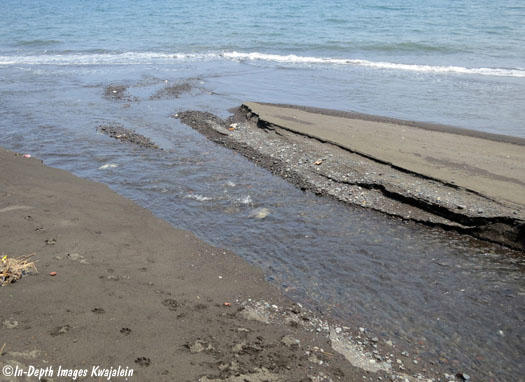
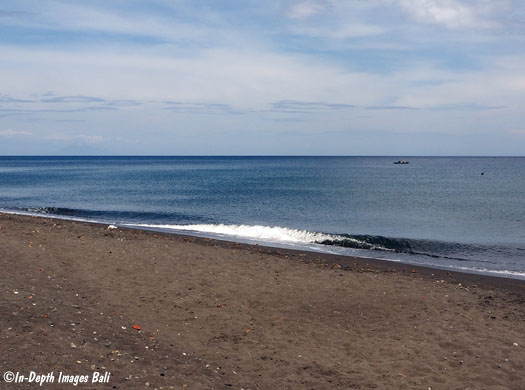
On our first couple of trips there, there was just a small area set up for divers and a basin for washing gear. The small parking area held a couple of vans from other dive groups.
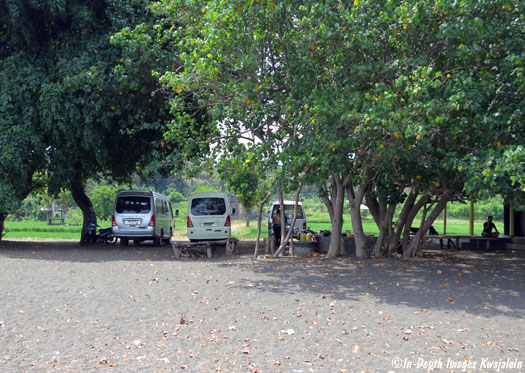
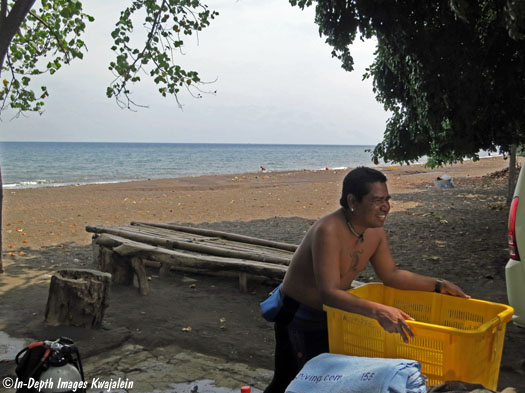
By 2017, the area had been built up, with several covered platforms and tables for dive groups.
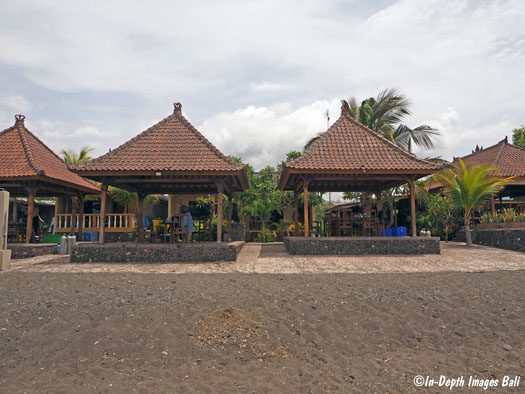
A slender skimmer (Orthetrum sabrina).
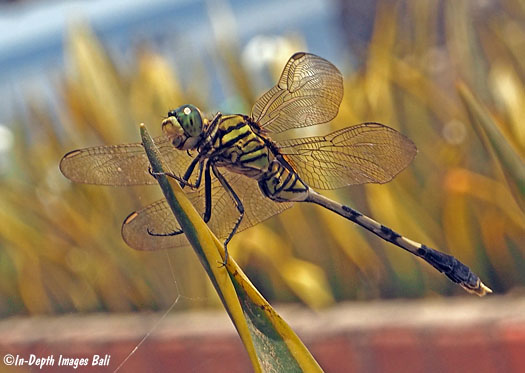
Some ducks and cows were in the shallows around the shallow fresh water stream.
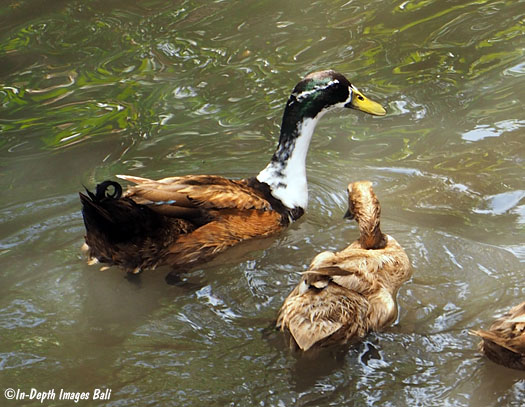
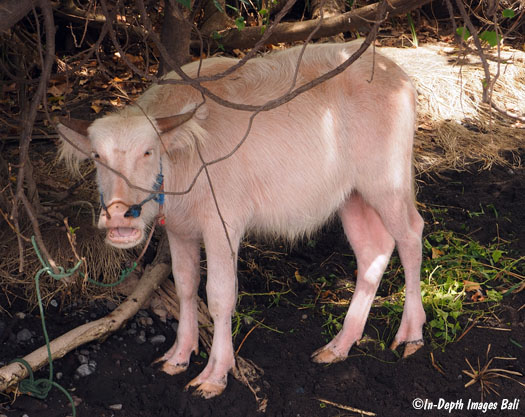
Close tab to return to previous page.